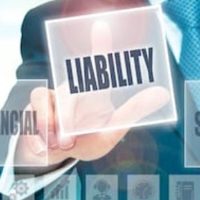Is King County Responsible For A Dangerous Condition On The Green River Trail?

Under Washington law, local governments can generally be sued and held liable for injuries that occur on their property the same as any private landowner. For example, if you are injured in a slip and fall accident inside of a King County office building, you could sue the county and seek monetary damages for your injuries. While certain rules applicable to government property injuries differ from lawsuits against private businesses, the basic underlying tort principles are the same.
But there is also an important exception in state law–applicable to both private and government landowners–for recreational use. Basically, when any property owner opens their land to members of the public for the purpose of “outdoor recreation,” said property owner cannot be held liable for “unintentional injuries” sustained by members of the public who choose to engage in such recreational use.
Washington Supreme Court Allows Bicycle Accident Victim’s Lawsuit to Proceed Over Allegedly Dangerous Metal Post
Recreational use immunity is itself subject to certain exceptions. The Washington Supreme Court recently addressed one of these exceptions in a case, Schwartz v. King County, involving a plaintiff who was injured in a bicycle accident that took place on the Green River Trail. According to the plaintiff’s lawsuit, he was riding on the trail when he collided with a bollard–a removable metal post designed to prevent motor vehicles from entering the trail–which split his bicycle in two and threw him to the ground. Despite wearing a helmet, the plaintiff sustained a serious spinal cord injury and is now a quadriplegic who requires a ventilator to breathe.
King County’s Regional Transportation System installed the bollard and was responsible for its maintenance. According to expert witnesses retained by the plaintiff, there was insufficient contrast between the bollard and the pavement such that it was effectively impossible for a bicyclist to see the post, particularly in Seattle’s famous wet and overcast conditions, which were present on the day of the accident. Indeed, a former King County employee also testified in a deposition that the County had done “nothing to warn trail users about the bollard.”
King County argued that it was still entitled to immunity from lawsuit under the recreational use exemption. The plaintiff asked the trial court to bar that defense because there is an exception to the exception for “dangerous artificial latent conditions.” Essentially, a landowner cannot rely on recreational use immunity if the plaintiff’s injuries were caused by a known dangerous condition on the property and the landowner failed to post conspicuous warnings.
The county argued the bollard was not “dangerous” or “latent” as defined by the statute. The trial court agreed and granted summary judgment to the county. The Washington Court of Appeals reversed, however, holding that the plaintiff identified “genuine issues of material fact” to justify sending the issue to a jury. First, the very nature of the plaintiff’s catastrophic injuries provided “direct evidence” that the bollard was dangerous. Second, there was testimony presented from other witnesses who were injured by other bollards on the same trail who had complained to the county. Finally, the Federal Highway Administration itself had also warned about the dangers of even “properly installed” bollards.
Speak with a Washington Premises Liability Attorney Today
Property owners–especially government property owners–are often stubborn when it comes to compensating accident victims. That is why it is important to work with a qualified Seattle government property injury lawyer who will fight for your rights under the law. Contact the Emerald Law Group today to schedule a free confidential consultation.
Source:
scholar.google.com/scholar_case?case=5865880847543128309
